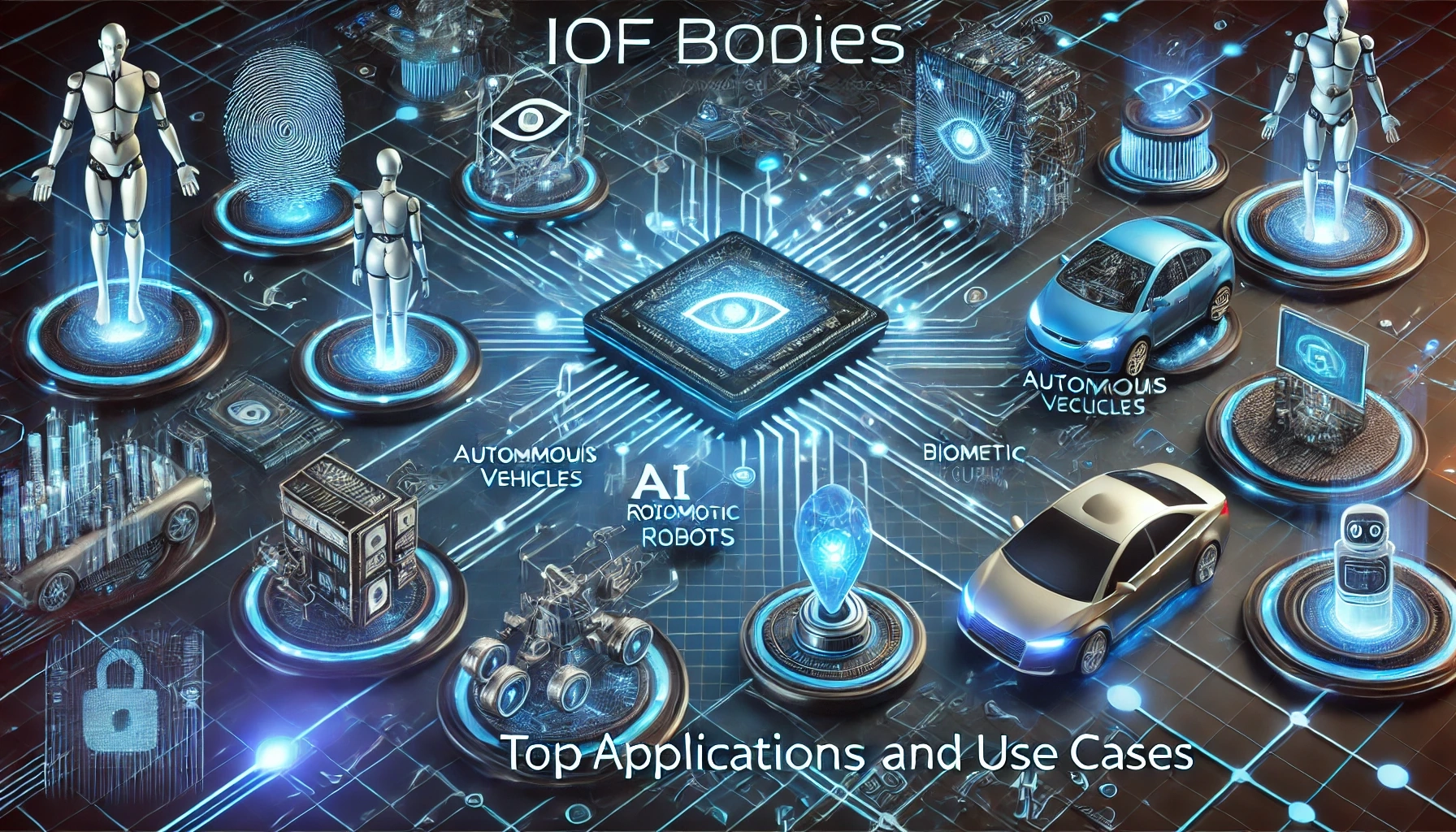Introduction to IOF Bodies
Understand the top applications and use cases of IOF Bodies, revolutionizing healthcare, fitness, and digital health innovations. The Internet of Bodies (IOB) is a sophisticated part of IoT that gathers biometric data using connected devices. These devices can be wearable, implantable, or ingestible, collecting real-time physiological data that improves healthcare, security, fitness, and workplace productivity.
With the integration of artificial intelligence, IoT, and big data analytics, IOF (the internet of flesh) IOF Bodies enable remote patient monitoring, chronic disease management, fitness tracking, and even military health applications.
Blending into its applications, the article summarizes the top applications, use cases, and future potential of the Internet of Things, strengthening the discussion with insightful notions on its benefits, challenges, and ethical considerations.
To Know IOF Bodies
The Internet of IOF Bodies refers to a group of interconnected devices that interact with the human body and transmit health and biometric data over the Internet. These devices mainly fall into three categories:
- Wearable Devices
Examples: Smartwatches, fitness trackers, ECG monitors, smart clothing.
Purpose: Real-time measurements of heart rate, oxygen levels, body temperature, and movements.
Use Cases: Personal health monitoring, analysis of sports performance, and wellness monitoring of employees. - Implantable Devices
Examples: Pacemakers, cochlear implants, neurostimulators, and RFID chips.
Purpose: Augmenting functions of the body, restoring lost capabilities, and monitoring chronic ailments.
Use Cases: Medical IoT applications, chronic pain treatment, and bio-augmented human enhancement. - Ingestible Devices
Examples: Smart pills with micro-cameras and biosensors.
Purpose: Gathering of internal health data for diagnostics and treatment monitoring.
Use Cases: Documentation of gastrointestinal diseases, drug absorption tracking, and digestive health monitoring.
Mobile applications IOF Bodies
Healthcare and Medical IoT applications
Smart healthcare solutions powered by IOB technology are the new game-changers in the healthcare domain.
Remote Patient Monitoring: An ECG sensor, smart insulin pumps, and any kind of other devices or body-vitality tests measure robots so that the tracking of health is commenced in real-time. (Source)
Chronic Disease Management: Patients suffering from diabetes use continuous glucose monitors (CGMs) for monitoring their blood sugar levels.
Smart Prosthetics: AI-powered bionics limbs optimize their mobility according to the user’s movement.
Telemedicine and AI Combination: With wearable AI pieces of equipment, healthcare professionals make data-based decisions remotely.
Fitness and Well-being
IOF technologies play a significant role in smart fitness tracking and digital health innovations.
Smart Wearables: Devices such as Fitbit, Apple Watch, and WHOOP bands will now measure steps, heart rate, and other parameters.
AI-Powered Workouts: Biometric datasets are utilized in fitness apps to draw personalized exercise plans.
Mental Health Monitoring: EEG headbands and smart rings aim to assess stress levels while proposing relaxation techniques.
Workplace Productivity and Employee Health Monitoring
Employers have started to introduce biometric tracking to manage employee health and improve productivity in the workplace.
Ergonomic Enhancements: Smart posture sensors prevent work environment injuries.
Exoskeletons in Factories: Augmented suits assist factory workers in safely and seamlessly lifting heavy loads.
Bioauthentication for Security: Fingerprint and retina scanning ensure the protection of sensitive areas from being invaded.
Military Applications: IOF Bodies
The field of defense is being improved through human augmentation and biometric tracking for military purposes.
Wearable Soldier Tech: Smart helmets, bio-monitors, and exoskeletons help blaze trails for the emergence of more worthy capacity on evil.
Medical Diagnostics: Ingestible biosensors aid in determining whether soldiers were exposed to harmful chemicals or not.
Education and Smart Learning Environments
Wearable EEG headsets and AR-based learning are unleashing the full potential of education, where each learner gets a truly unique learning experience.
Real-Time Engagement Tracking of Students: Eye movement sensors measure an attention span.
VR-scene practical training conditions: Medical students practice surgical procedures through haptic feedback gloves.
Public Safety and Smart Cities: IOF Bodies
The Internet of IOF Bodies goes a long way in providing smart cities with real-time health surveillance and emergency response.
Emergency Medical Alerts: Wearable detects cardiac arrest and alerts close hospitals.
Health-based Traffic Management: Smart cars change speed depending on passenger biometrics.
Benefits of IOF Bodies:
- Improved Healthcare Outcomes
Early detection of diseases via continuous monitoring.
AI-assisted diagnosis leading to fast medical interventions. - Higher Quality of Life
People with disabilities reap great benefits from AI-powered prosthetics and implants. - Personalized Health Insights
Wearable devices provide individual guidance for fitness and diet based on biometric data. - Increased Productivity at Work
Smart Exoskeleton lowers chances of injuries in some of the highest-risk industries. - Military and Security Enhancements
Usage of real-time soldier biometric data improves battlefield medical response.
Challenges and Ethical Considerations: - Privacy and Data Safety Risks
Cybersecurity in the healthcare field is important because biometric data is highly sensitive.
There is always a risk that hackers can get into computer systems and access health records without consent. - Ethical Concerns
Who exactly owns that data once it’s collected from bio-integrated devices?
The potential abuse of enhanced humans for surveillance. - Regulatory Issues
Countries will be required to impose strict laws against biometric health data collection.
Future of the Internet of IOF Bodies
Bio-integrated technologies hold great prospects, courtesy of advances in AI, blockchain, and biotech:
AI-Powered Healthcare: Predictive analytics to determine health risks prior to the appearance of symptoms.
Blockchain for Data Security: Prevention of data breach by decentralized storage systems.
Non-Invasive Smart Implants: Advanced nanotechnology shall enhance the capabilities of the human being in ways that shall create the opportunity for augmented humanity applications without having to resort to surgery.
Conclusion
The Internet of IOF Bodies is redefining healthcare, fitness, workplace productivity, defense, and education. These all provide benefits that cannot be understated, though a number of concerns exist that call for utmost consideration over privacy, security, and ethical considerations. With advancements in AI, medical IoT and cybersecurity, the future of human augmentation and connected health is bright.




